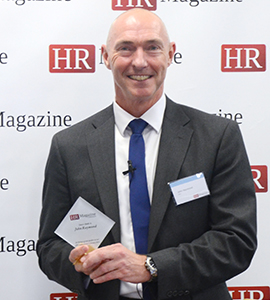
John Raymond, Head of Coaching, IECL

Raymond surprised the audience by stating, “Coaching has become too popular” and explained, “Coaching needs to sit in service of a business objective. It is an enabler, a means to an end which helps you to become successful whether it is to improve productivity, engagement, retention, embedding learning etc.”
Despite coaching ‘becoming too popular’, there is still a lot of confusion about what it actually is. For example, mentoring and coaching are often used interchangeably but this is not helping. Raymond highlighted that mentoring is different from coaching. Mentoring often involves imparting knowledge and advising whereas coaching revolves around asking questions in order to challenge employees to think more on their own and to breakthrough interferences that are limiting their potential.
The Asian Leadership index from 2014 has identified desirable leadership qualities across most Asian countries. To achieve nearly all of the top rating skills, coaching can help, and therefore coaching, is critical for an organisation to achieve its goals. If we define coaching as ’asking questions to get people to think differently and act on it in order to get a better result‘, it is easy to see how coaching can help leaders to become more communicative, visionary and emotionally aware—all skills identified as needing to be better developed or improved upon in The Asian Leadership Index 2014.
Science tells us that coaching helps achieve a whole host of organisational outcomes including: embedding learning, improving staff engagement, developing capability and capacity, improving efficiency and productivity, strengthening relationships, improving communication and increasing wellbeing and resilience.
So how can you start to develop leaders with coaching? Raymond concluded with 5 key take-away tips: first, ask more questions and dedicate more time for them. Second, do not be scared to ask difficult, challenging questions—they get employees to think outside the box. Third, slow down the conversation and allow for silence as this will allow employees to contribute more. Fourth, believe in the person’s potential to know the answer—sometimes it is just the case that they need more time to think. Finally, create high trust relationships





